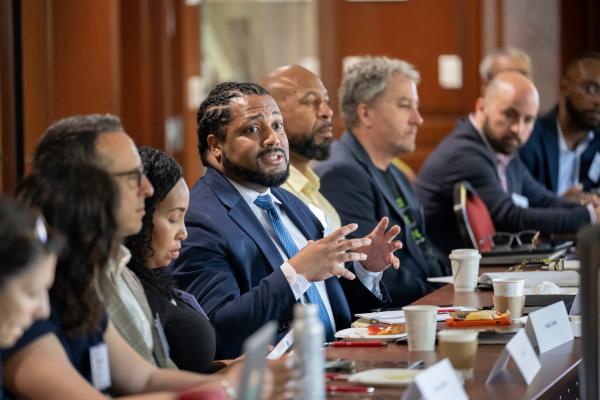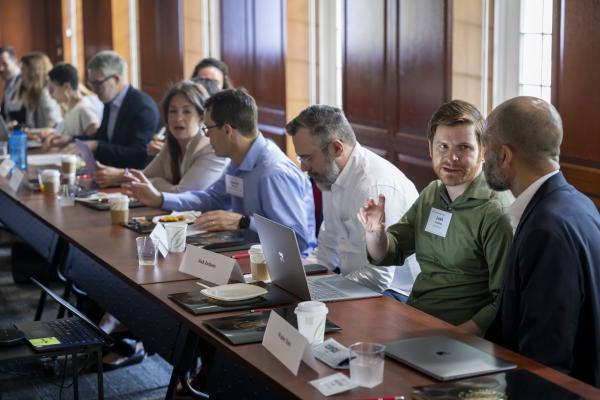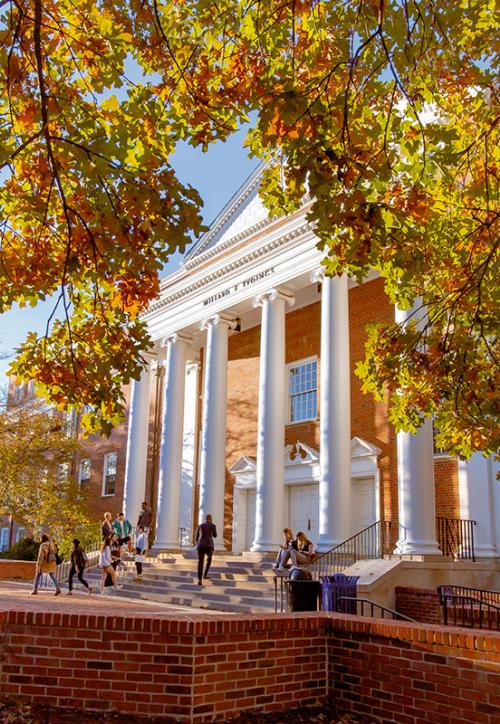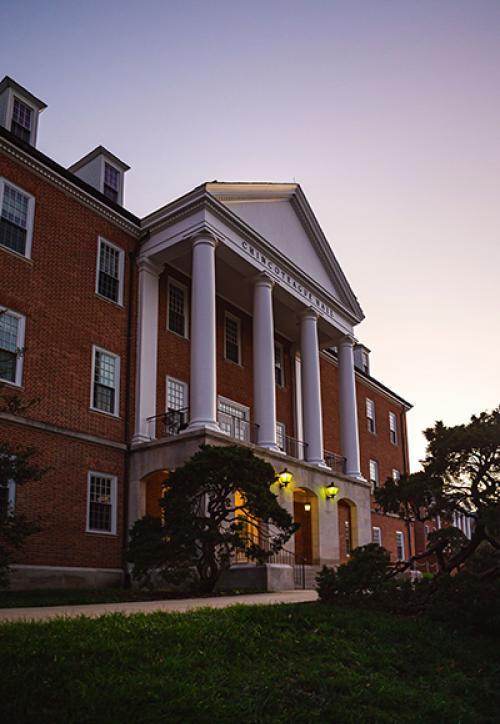Leaders in Community Violence Prevention Convene at UMD
Violence Reduction Center Hosts Symposium on Community Violence Analysis, Solutions
The University of Maryland’s Center for the Study and Practice of Violence Reduction, also known as the Violence Reduction Center (VRC), recently brought together more than 30 experts in community violence to discuss the best, most impactful ways to analyze and make use of that data.
“We know that community gun violence is the gun violence that counts for the majority of homicides every single year, and we also know that in city after city, people either don’t know this, or don’t know how to act upon this information,” Thomas Abt, VRC Director and associate research professor in the Department of Criminology and Criminal Justice (CCJS), said before representatives from the White House Office of Gun Violence Prevention (WHOGVP), the National League of Cities, the National Network for Safe Communities, and more. “Community violence analysis can be extremely helpful; both in orienting cities, and in helping them manage these problems going forward.”

Everytown for Gun Safety, the largest gun violence prevention organization in America, and The Joyce Foundation, a private, nonpartisan philanthropy that invests in public policies and strategies to advance racial equity and economic mobility, offered their support for the event.
"As a proud alum of UMD, I was honored to support the Violence Reduction Center at the University of Maryland, College Park as they convened the nation’s brightest minds to exchange best practices and delve into innovative approaches to bolster city initiatives aimed at curbing gun violence,” said Michael-Sean Spence, a 2004 graduate of the Robert H. Smith School of Business and managing director of Everytown for Gun Safety’s community safety initiatives. “Recognizing gun violence as a pressing public health issue, we understand the nuanced challenges each city faces, requiring intentional problem analysis and tailored strategies for success. Through this critical endeavor, the VRC is poised to enhance its capability to deliver the crucial support cities need to implement effective solutions.”
The day’s conversations were broken into five topical sections, each featuring multiple presentations by attendees, and followed by question-and-answer sessions. Insights from the symposium will be used to create a white paper the VRC plans to produce later this summer.

The key questions the experts set out to answer, however, concerned what the key components of community violence analysis are, how community violence analysis should be used, challenges and limitations of community violence analysis, what gaps there are in the current approach to community violence analysis, and how to make community violence analysis more accessible.
As CCJS Chair Rod Brunson called attention to in his opening remarks, another topic of conversation was the importance of listening “to those who are closest to the problem, particularly those who are victims and perpetrators of gun violence because they own the solutions.”
"To have a near-term impact, violence intervention efforts have to focus relentlessly on the very small number of people most immediately vulnerable to involvement in gun violence,” said Louisa Aviles, Senior Program Officer of The Joyce Foundation. “We were very glad to support this convening of experts in the field, hosted by the Violence Reduction Center at the University of Maryland-College Park, and are hopeful that the day’s discussion will support and advance this critical work."
Gregory Ball, Vice President of Research at UMD, was also in attendance. He welcomed guests to the University, and thanked them for their ongoing efforts to combat violence.
“The truth is, your help is so important and urgently needed,” he said to the group. “Many cities feel pressure to take action on gun violence without fully understanding the problem they face. Analyses that help inform policymakers where the violence is taking place and who is committing the violence offer an important first step.”
The white paper featuring insights from the Symposium on Community Violence Analysis will eventually appear on the Violence Reduction Center’s website, vrc.umd.edu. For additional updates, follow the VRC on X @VRC_UMD.
Photos are by Lisa Helfert Photography
Published on Wed, May 1, 2024 - 8:54AM




